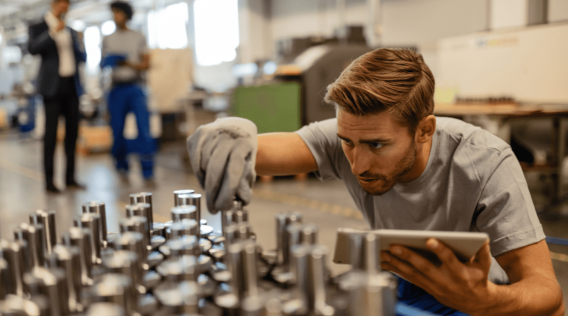Die casting is a popular manufacturing technique used in a wide range of industries to produce metal parts with high precision and accuracy. The process involves injecting molten metal into a mold cavity under high pressure, which results in the creation of parts with complex shapes and intricate details. In this article, we will explore the world of die castings and delve into the art and science behind this precision manufacturing technique.
The History of Die Castings
Die casting has been around for centuries, with the earliest known examples dating back to ancient China, where bronze and other metals were cast using the lost wax method. However, it wasn’t until the 19th century that the modern die casting process was developed. In 1838, American inventor Elisha K. Root patented the first-ever die-casting machine, which used a hand-operated plunger to inject molten metal into a mold cavity.
Over the years, die casting technology has evolved significantly, with the development of electric and hydraulic casting machines, advanced alloys, and computer-aided design software. Today, die castings are used in a wide range of applications, from automotive and aerospace parts to consumer electronics and household appliances.
The Die Casting Process
The die casting process involves several stages, each of which is critical to producing high-quality parts with precision and accuracy. The following is an overview of the typical die casting process:
1. Mold Design: The first step in the die casting process is designing the mold. The mold must be able to withstand high temperatures and pressures, as well as accurately replicate the desired part shape and size.
2. Mold Fabrication: Once the mold design is finalized, the mold is fabricated using various cutting and milling techniques. The mold is typically made of steel or another durable metal alloy.
3. Melting the Metal: The next step is to melt the metal alloy that will be used to create the part. Typically, the metal is melted in a furnace or crucible, and then transferred to the casting machine.
4. Injecting the Metal: The molten metal is then injected into the mold cavity under high pressure using a plunger or other mechanical device. The metal cools and solidifies in the mold, taking on the shape and details of the mold cavity.
5. Ejecting the Part: Once the metal has cooled and solidified, the mold is opened, and the part is ejected from the mold cavity. The part may require further machining or finishing before it is ready for use.
The Art of Die Castings
While the die casting process may seem straightforward, there is an art to producing high-quality die castings. For example, the design of the mold must take into account factors such as part geometry, mold material, and cooling time to ensure that the final part meets the desired specifications.
The operator of the casting machine must also have a keen eye for detail and be able to monitor the process closely to ensure that the molten metal flows evenly into the mold cavity and that there are no defects or imperfections in the final part.
Additionally, post-processing techniques such as deburring, sandblasting, and painting can also play a significant role in enhancing the appearance and functionality of the final part.

The Science of Die Castings
While there is undoubtedly an art to die castings, there is also a significant amount of science involved in the process. For example, the chemical composition of the metal alloy can play a critical role in determining the final properties of the part, such as strength, hardness, and corrosion resistance.
The casting machine’s hydraulic or electric systems must be precisely calibrated to ensure that the molten metal is injected into the mold cavity at the correct pressure and temperature, and that the mold is opened and closed smoothly and accurately.
Additionally, computer-aided design (CAD) software can be used to simulate the casting process and optimize mold design, allowing manufacturers to achieve greater precision and accuracy while reducing costs and lead times.
Conclusion
In conclusion, die casting is a precise and versatile manufacturing technique that has been used for centuries to produce high-quality metal parts. The process involves a delicate balance of art and science, from mold design and fabrication to metal melting and part ejection.
As technology continues to evolve, so too will the world of die castings, with advancements in materials, software, and machinery driving innovation and new possibilities for this critical manufacturing technique.
-

- Magnesium alloy bike parts & componenets for kid’s push bike
-

- OEM ارتفاع ضغط يموت الصب عجلة سبائك المغنيسيوم للدراجة الإلكترونية
-

- مصنع مخصص الصين Bmx دورات الطريق الرياضة الاطفال دراجة 12 16 18 20 بوصة دورة MTB للأطفال 6-10 سنوات
-

- Thixomolding parts & components mobile phone middle board processed
-

- عجلة قيادة مصبوبة بدقة عالية للسيارات
-

- Die cast magnesium parts laptop housing cover D

 0086-750-5616188
0086-750-5616188 +86 13392089688
+86 13392089688 sales@zhongmei-tech.com
sales@zhongmei-tech.com







